 Republic of South Africa (1979)
Republic of South Africa (1979)
Mine Protected Vehicle – 2,800+ Built
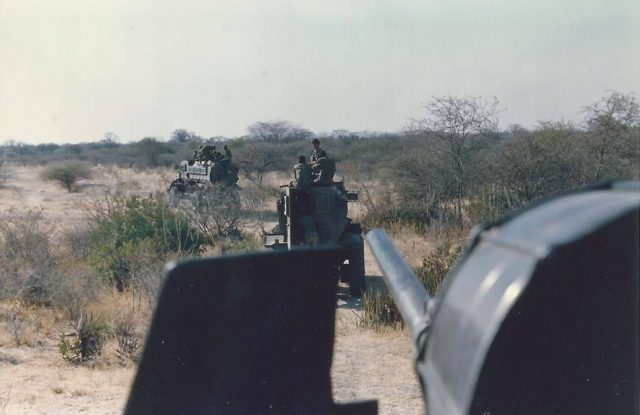
Koevoet Casspir APC fighting group on patrol in Angola, 1984 – With permission from J. Durand
The African Mine Tamer
The Casspir Mine Protected Vehicle (MPV) is considered by many to be the father of all modern enclosed V-shaped monocoque hulled Mine-Resistant Ambush Protected (MRAP) vehicles which have been developed and deployed by many Western armies. The name Casspir was first coined by Eddie Caromba in May 1979 and is derived from the anagram of South African Police (SAP) and CSIR (Council for Scientific and Industrial Research). The Casspir was designed and produced at a time when South Africa was subject to ever more strict international embargoes because of its segregation policies (Apartheid). Set against the backdrop of the Cold War in Southern Africa which saw many anti-colonial wars, internal liberation conflict along political, ethnic and tribal lines, supported by Eastern Bloc and Western benefactors. Today, the Casspir is also widely used as the vehicle of choice for demining, which involves the removal of anti-personnel and anti-tank landmines, but also in humanitarian and peacekeeping operations by the United Nations around the globe.
Development
During the mid-1970`s the Defence Research Unit (DRU) of the CSIR commenced work on a monocoque hull MPV concept. During the same time the South African Police (SAP) requested a vehicle with good off-road capability, mine protected, field repairable (if a mine is detonated), with sufficient armor against small arms fire and which could carry a sufficient number of counter-insurgency personnel. It was to be fielded by the SAP-Counter Insurgency (COIN) and South West Africa Police (SWAPOL)-COIN units. The latter SWAPOL-COIN unit was referred to as “Koevoet” (crowbar) operating in the northern part of South West Africa (Namibia) against the “South West Africa People’s Organization” (SWAPO). The Casspir also saw extensive use with the 101 Battalion and Romeo Mike (Reaksie Mag “Reaction Force”) units. From their bases in Angola, SWAPO insurgents would cross the border into South West Africa and conduct sabotage, intimidation and assassination raids. SWAPO often made use of landmines which were mostly sourced from Warsaw Pact countries such as the USSR. More often than not, innocent civilians would pay the ultimate price.
The first prototype named “Flossie” was delivered by CSIR in 1978. The design was somewhat primitive with numerous problems and shortcomings. Made from Bedford truck parts, the vehicle featured a V-bottom armored monocoque hull design with the suspension modules located on the outside to ease repair and replacement should the module be blown off by a mine. An attempt was made to install a Unimog 352 engine, but was unsuccessful. The UCCD which was the biggest importer of Mercedes Benz (MB) parts to South Africa was approached to assist in improving the design with MB parts. A Mercedes Benz LA1113/42 driveline was fitted successfully in addition to 4×4 truck components which included the engine (OM352), axles, gearbox and transfer box. The first prototype was ready in May 1979 and after a brief trial period, the Casspir was accepted by the SAP who placed an order for 140 vehicles early in 1980. Ultimately, 190 Casspir Mk1 vehicles were manufactured by Henred Fruehauf.
From 1981 production of the Casspir APC was transferred to TFM Limited who designed the Mk2. On the outside, the Mk1 and Mk2 were very similar with the latter having the escape hatch located on the left side of the vehicle removed. Additionally, TFM Limited designed a whole range of support vehicles in 1982 based on the Casspir APC hull (to be covered later in the article). Being so impressed by the vehicle`s successful use against SWAPO insurgents, the South African Defence Force (SADF) showed interest as early as 1982/3 and came to incorporate the Casspir APC Mk2 and Mk3 into the 32 Battalion and the elite 5 Reconnaissance Regiment better known as Recces after the South African Border War.
The Casspir production companies have changed hands over the past 25 years on a regular basis. For clarity the sequence is as follow: TFM was taken over by Reumech. Reumech , in turn, was taken over by the UK-based Vickers Defence Systems and subsequently renamed Vickers OMC. When Alvis purchased Vickers Defence Systems to become Alvis Vickers, Vickers OMC became Alvis OMC. In 2004, British Aerospace (BAE) Systems acquired Alvis Vickers and Alvis OMC was renamed Land Systems OMC. In 2015, the South African defence firm Denel purchased a 75% controlling share in Land Systems OMC which brought the ownership of the Casspir back to South Africa so to speak. New hull designs have emerged such as the NG2000 and NG2000B, which will covered in another article. As of 2017, more than 2800 Casspirs` in various variants have been produced for the South African and the export market. Among the foreign users are Angola, Benin, Burundi, the Democratic Republic of the Congo, Djibouti, Egypt, Ghana, India, Indonesia, Iraq, Malawi, Mozambique, Namibia, Nepal, Peru, Saudi Arabia, Senegal, Sierra Leone, Tanzania, Uganda and the United States.
Design features
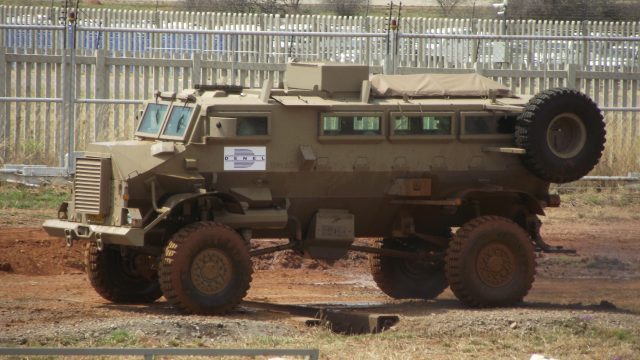
Casspir Mk3 APC, Waterkloof AFB – AAD2016 (Photo: Dewald Venter)
Interactive Casspir Mk2 with permission from ARMSCor Studios
The Casspir was designed primarily as a mine resistant APC which could operate in some of the most hostile terrains in the world, which in themselves could inflict severe punishment. The Casspir has several characteristics which have led to its success. It is of 4×4 design coupled with differential lock, making use of four large run-flat tyres which are designed to resist the effects of deflation when punctured. It has a high ground clearance (365mm) which, coupled with the all-important V-shaped armored underbelly, helps disperse and deflect mine blast energy away from the hull. Making use of commercially available parts reduces its reliance on specialised logistical train (the process of producing and supplying parts) with the added benefit of decreasing the need for support vehicles for spare parts and specialized maintenance while deployed. The front of the vehicle is strengthened and optimized for driving through instead of around small trees and heavy brush popularly referred to as bundu bashing (bush breaking ability). It can travel long distances (800 km/500 mi on road) without having to refuel and at a comfortable pace of 90 km/h on road (56 mph), which arguably makes it one of the most versatile APCs ever fielded. The Mk3 (and subsequent variants) used by the SADF has a thicker V-shaped hull, 14.00xR20 tyres and a different engine. The Mk3 standard also includes structural alterations for improved mobility, with more robust axles.
Mobility
The Casspir’s 4×4 configuration was designed for the African battle space and characterized by its versatility and cross-country capability. As with all wheeled vehicles, it requires less maintenance than their tracked counterparts. It has a ground clearance of 365mm and can ford 1 meter (3 ft 3 in) of water. The Mk2 is equipped with the ADE 352T six-cylinder turbocharged, water cooled diesel engine which produces 166 hp (15.5 hp/t). The engine is located at the front of the vehicle and is coupled to a Mercedes Benz MB G5, five speed synchromesh manual transmission. It has five forward gears and one reverse. The transfer box is the Mercedes-Benz VG 500-3W. The power is transferred to axles (Mk1 and Mk2 used Mercedes-Benz axles and Mk3 ZF axles) of which the rear has a differential lock.
The Casspir Mk2C(I) variant makes use of an upgraded Tata driveline system developed by Denel Mechem in 2010. The power pack of the Mk2C(I) consists of a Tata 697 TC diesel engine that develops 157 hp at 2,800 rpm coupled to a Tata GBS-50 transmission with five forward and one reverse gear as well as a Tata transfer case. The front axles are Tata FA 106 rated at 6,500 kg while the rear axles are Tata RA 106 rated at 10,000 kg. As with most other South African designed military wheeled vehicles, the Casspir was designed with the challenges of the African Bush in mind. The Casspir is incredibly stable and has excellent off-road mobility due to its simple and innovatively designed suspension and powertrain. It features a semi-elliptic leaf spring (front and rear) which allows for a great degree of deflecting. To improve stability and maximize comfort, check straps were incorporated to counter the axle rebound.
Endurance and logistics
The Casspir has a 200-litre fuel tank which grants it an operational range of 800 km (500 miles) via road and 400 km (250 miles) cross country. It has a road speed of 90 km/h (56 mph) and a cross-country speed of 28 km/h (17 mph). A modular design was chosen in order to ease maintenance and reduce logistical requirement. The Casspir makes use of interchangeable components which are easily accessible. The Casspir APC also featured a 200/220 litre water tank which is vital given the expected lengths and conditions the vehicle spend in the field.
Although the Casspir APC is not fitted with weapons as standard, a primary gun mount is sometimes added above the driver’s compartment. The armament usually consists of either a 7.62mm or 12.7mm machine-gun. During the South African Border War, some Casspirs were fitted with 20mm Hispano cannons originating from retired South African Air Force (SAAF) fighter planes such as the Spitfire Mk.IX and DeHavilland Vampire jets. Other units such as Koevoet made use of captured weapons which included KPV/KPVT 14.5mm heavy machine gun. The co-driver’s front window can also be equipped with a machinegun making use of a gimbal mount. Six gun ports are located on either side of the troop compartment as well as two in the rear doors for close in defense.

Koevoet Casspir APC armed with a 20mm Hispano cannon at Oluno Ovambo training base, Ondangwa 1984 – With permission from J. Durand
Vehicle layout
The engine and transmission are also located inside the armored hull to reduce major damage if a mine was detonated. The Casspir APC has a crew of two which consists of a driver and vehicle commander/gunner and can accommodate 10-12 passengers. The crew compartment is located in the front of the vehicle, behind the engine with the troop compartment extending right to the rear. The troop compartment has three rectangle bullet resistant windows and six firing ports on either side of the hull. Passenger seats face inwards and are equipped with a four-point safety harness. Access to the troop compartment is provided via two air-operated rear doors which can be remotely opened by the driver. The doors are equipped with bullet-resistant window blocks. During the South African Border War, the roof hatches in the driving compartment where often left open especially during summer, allowing much needed air to enter. Early Casspirs had a small fan, retrofitted to keep on board equipment cool. Modern variants are often fitted with air-conditioning units.
Protection
Being a dedicated MPV, the Casspir could protect its occupants against a triple TM-57 mine blast under any wheel or a double mine blast under the hull. The success of the Casspir as an MPV lies in its V-bottom armored monocoque hull design which deflects blast energy and debris away from the hull. The fuel tank features a blast proof cap and is located on the inside of the armored hull to protect it from mine blasts thereby reducing the chances of a secondary explosion. The hull is rated to protect against 7.62x51mm NATO and 7.62x39mm AK-47 Ball.

Casspir Mk2 APC with co driver’s front window equipped with gimbal mount for a light machine gun – Sandstone Heritage Estate – 2015 (Photo: Dewald Venter)
Operational doctrine
During the South African Border War, Casspirs APC operated by “Koevoet” would travel in fighting groups of four with a Blesbok (supply/logistics) and Duiker (diesel/fuel) in tow for between 5-7 days covering roughly 600-800km. Each Casspir has a built in 200L water tank, and two spare tires mounted either side of the lower troop compartment or either side to the rear of the troop compartment.

Koevoet fighting group on patrol Angola, 1984 – With permission from J. Durand
The Casspir Family
The versatility of the Casspir APC hull is best illustrated when evaluating the entire family of combat and support vehicles which have spawned therefrom. South African Motorized Infantry forces field a variety of these vehicles, built on the Mk2 and Mk3 hull, which includes the following variants: Dedicated weapons platform, artillery fire control, Blesbok cargo support, Duiker fuel bowser, Gemsbok recovery vehicle, Plofadder mine clearing, ambulance and vehicle mounted metal detection system, Groundshout psychological warfare system and law enforcement.
Dedicated weapons platform
Some interesting Dedicated Weapons Platforms (DWP) have evolved making use of the Casspir Mk3. These dedicated weapons platforms include a 81mm mortar system and a 106 mm recoilless gun.
81 mm mortar weapons platform
The 81mm mortar weapons platform is based on the Casspir Mk3 and is a rebuild of an existing vehicle. This version features a fully enclosed crew compartment at the front of the vehicle while the rear mortar section offers armor protection on the sides and rear. The sides and rear are fitted with bullet resistant windows for better all-round vision. It can carry a total of 192 mortar rounds, stored in ready to use racks with the associated number of charges and fuses. By combining an 81mm mortar with a Casspir, the time into and out of action is reduced which leads to quicker target engagement and a reduction in the possibility of the mortar weapon’s platform being located and neutralized through counter battery fire. To enhance its tactical flexibility, the mortar can be removed and used in the ground role should it be required or if the vehicle is disabled. A 7.62mm machinegun is mounted on the roof for all round defense.
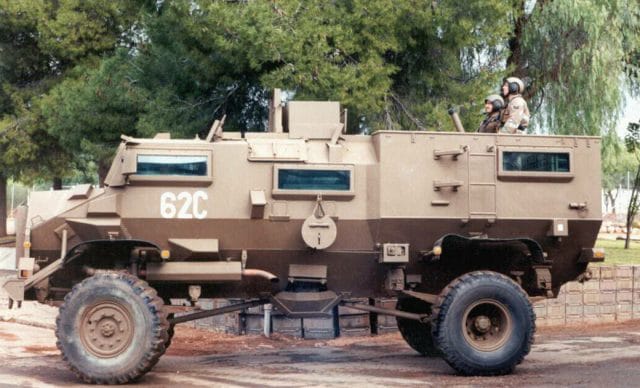
81 mm mortar weapons platform based on Casspir Mk3. Credit South African Defense Industry & Military Related
106 Recoilless gun weapons platform
Also based on the Casspir Mk3 rebuilt from an existing vehicle, the Recoilless gun weapons platform features a fully enclosed crew (front) and troop (middle) compartment with the 106mm M40 recoilless gun located at the rear. The side and rear panels can be folded down allowing the gun to be laid on target (aimed). A total of 12 rounds of High Explosive Anti-Tank (HEAT) rounds are carried in a ready to use state. To enhance the tactical flexibility of the weapons platform, the gun can be removed and utilized in a ground role should it be required or if the vehicle is disabled. A 7.62mm machinegun is mounted on the roof for all round defense. There are 32 in operational service with the SANDF.
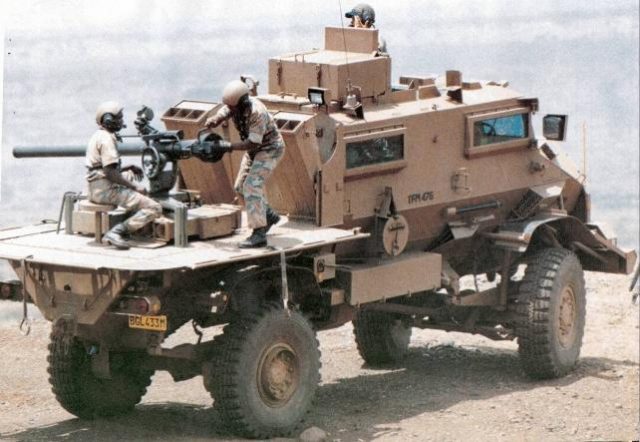
106 Recoilless gun weapons platform. Credit to D. Haugh
Artillery fire control
The SANDF has a several artillery fire-control vehicles based on the Casspir. Externally, they are set apart by the additional radio antenna and a larger telescopic mast.
Blesbok cargo support vehicle
A dedicated logistics vehicle used by the COIN units during the South African Border War. Each fighting group of four Casspir APC`s would be allocated one Blesbok cargo support logistics vehicle which would carry ammunition, rations, spares, fuel and camping equipment. This allowed the fighting groups to operate independently for up to a week without resupply. The Blesbok consisted of an armored two-man driving cab at the front with individual doors for the driver and commander. The cargo area was located at the rear and was equipped with drop sides for easy loading and offloading. It had a carrying capacity of 5 tones and could also be fitted with a 1000L water or fuel tank. A single 5.56mm Vector Mini-SS light machine gun could be mounted on the roof as well as in the front left window. A total of 160 vehicles were built for the SAP.
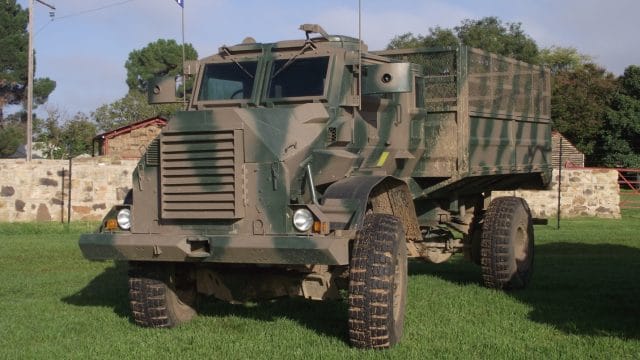
Blesbok, Sandstone Heritage Estate – 2015 (Photo: Dewald Venter)
Duiker fuel bowser
The Duiker is a dedicated diesel fuel bowser and consisted of an armored two-man driving cab at the front with individual doors for the driver and commander and a 3000L or 5000L bowser at the rear. It featured a gravity feed system with an optional electric pump. A single 5.56mm Vector Mini-SS light machine gun could be mounted on the roof as well as in the front left window. A total of 30 vehicles were built for the SAP.
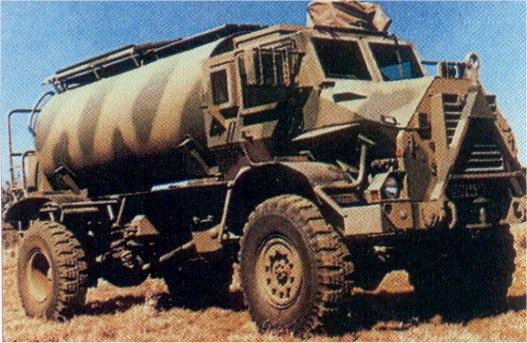
Duiker fuel bowser. Credit to D. Haugh

SAPS Air Wing Duiker fuel bowser. With permission from D. Badenhorst
Gemsbok recovery
The Gemsbok is a dedicated 15-ton recovery vehicle with an extended armored five-man driving cab at the front. The cab has an individual door for the driver and commander with an additional side door fitted on the left-hand side. The recovery equipment is located at the rear of the vehicle. The vehicle itself weighs 15.8 tones. Some 30 Gemsbok were produced for the SAP.
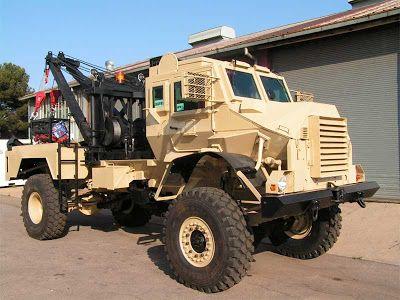
Gemsbok recovery. Credit to M. Cameron
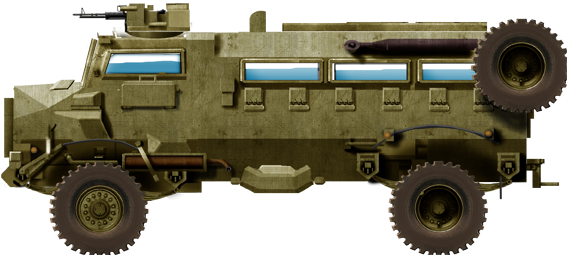
Casspir Mk2 dark sand livery. Illustration by Tank Encyclopedia’s own David Bocquelet.

Casspir Mk3 Ambulance

Casspir Mk3

Casspir Mk3 Koevoet Angola 1983

Casspir Mk3 Command
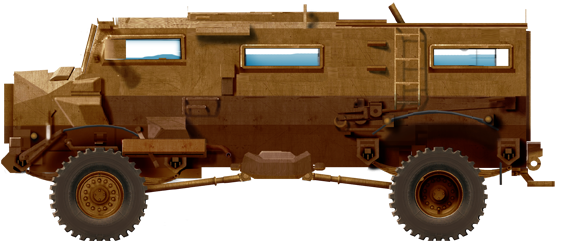
Casspir Mk3 mortar

Casspir Mk3 in UN colors

Casspir Mk2 based FK412 of a police unit
Visual references from the web
Plofadder mine clearing
The Plofadder serves as a dedicated mine clearing vehicle. It consists of an armored two-man driving cab at the front and makes use of a 160AT rocket-propelled mine clearing system which is slid into the back of the Casspir on rails from where it is launched through the open roof. Rails for loading the containers are carried on the side of the vehicle. The cable drum for the remote control system to fire the rocket is located on the right side of the vehicle.
Ambulance
Making use of the standard Casspir APC, the Casspir ambulance features an armored two-man driving cab at the front with individual doors for the driver and commander. The rear passenger compartment has been modified to carry two stretcher cases and three seats. Provision was made for storage of standard medical equipment such as a rack for drips. The rear compartment is also fitted with blackout curtains.
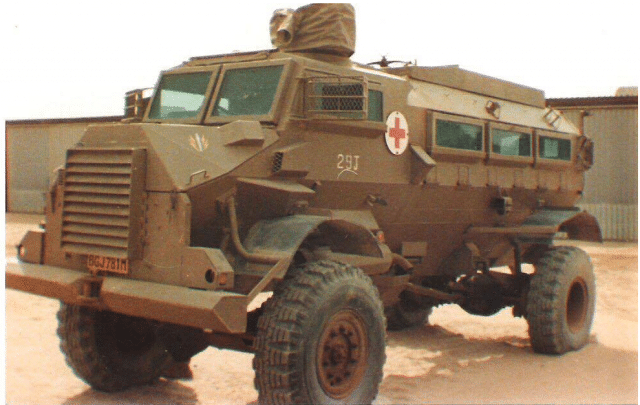
Casspir used as an ambulance by 61 Mechanized Battalion at Rooikop, Walvis Bay, 1991. – With permission from C. de Jager
Mechem vehicle mounted metal detection system (MVMMDS)
Developed by Denel Mechem, the Vehicle Mounted Metal Detection System (MVMMDS) makes use of a modified Casspir which tows a rubber mat containing the Vehicle Array Mine Detection System (VAMIDS) system which detects and marks the location of a landmine with white marking fluid. This system has had wide success in Sudan and Eritrea.

Vehicle mounted metal detection system. Credit Denel Mechem
Groundshout psychological warfare system
The Groundshout psychological warfare system variant of the Casspir was used for psychological warfare by Chief of Defence Staff Intelligence (CSI) as early as 1986. It was assigned to 101 Battalion under the command of Cmdt Les Rudman in 1987 near Mavingo. The Casspir was equipped with 3600 Watts from 4 900 watt AEM amps that drove 32 speakers with a 45 volt 100 amp engine driven alternator using a 36 volt Gates SBS110 battery. The equipment was mounted on a steel chassis which was bolted onto the seat belt bolts. Making use of a hydraulic telescopic boom designed by Skyjacks the speakers were elevated for broadcast and could be turned left and right as well as up and down. According to sources, FAPLA was very disturbed by this Groundshout System especially those in the trenches on the Lomba who absolutely hated it. Their morale was already low from the constant fighting with the SADF followed at night by the screaming, animal (Hyaena) and armored vehicle movement emanating from the Groundshout System. The system could be heard from as far as 8 km.

Groundshout psychological warfare system. Credit to A. Durand
Law enforcement
As the original user of the Casspir the South African Police (SAP) maintained a large contingent of Casspirs to maintain civil order during the pre-democratic South Africa. After the first democratic elections in 1994 the SAP was renamed the South African Police Service (SAPS). With less need for Casspir`s the SAPS sold a large number of the vehicles. The remainder were allocated to dedicated public order police units specializing in riot control. The present SAPS Casspir features larger bullet resistant windows for increased visibility in urban areas with added grills against rocks. The grill for the commander’s and driver’s windscreen can be pneumatically raised to increase visibility. An innovative feature is a front buffer (Bullbar) which can be lowered from inside the vehicle to bulldoze barricades and other obstructions. Additionally, a wire cutter can be mounted on the roof.

South African Police Casspir 1986 – With permission from T. de Klerk

South African Public Order Police Casspir 2015 – Credit to A. Mathey
The Sesspir Prototype
The Sesspir was a six wheel variant (hence the name “Ses” which is Afrikaans for “six”) for trials in 1984-85 based on feedback received from SADF troops whose Casspirs lost their front wheel in a landmine detonation which immobilised them during a contact situation. Featuring an extended nose to accommodate the additional front wheels the Sesspir, however, made use of the standard Casspir engine. Two Sesspirs were built and issued to 101 Battalion during 1987 for operational trials of which one was destroyed during Operation Firewood. It was found that the additional wheels placed too much demand on the standard Casspir engine which needed to push along the front wheels. The remaining Sesspir was converted back to an ordinary Casspir.

Sesspir APC, Owambo land near Mahnene, Northern Namibia 1988 – With permission from A. Swanepoel
The Casspir in Action
Since its introduction in 1984 and subsequent evolution variants, the Casspir family of MPV has formed an integral part of motorized operations by the former SADF during the South African Border War were it was used extensively by motorized infantry of the 101 Battalion. The 101 Battalion was a quick reaction unit stationed in north South West Africa (SWA) (Namibia), south of the Angolan border. Making use of the Casspir mobility and speed they would respond with force to insurgency raids by SWAPO from Angola into SWA. Each team in a company would consist of four Casspirs generally armed with 2 x Hispano Suiza 20mm cannons, 6 x 50 cal Browning machine guns, 4 x 7.62 Light Machine Guns (LMG) and 4 x 60mm patrol mortars. Expert Bushman trackers would follow the insurgent “spoor” (tracks) while the Casspirs with heavy armament would be a short breath behind to provide direct and overwhelming fire support as soon as contact was made with the insurgents.
The combination of speed, mobility and firepower made the Casspirs exceptionally effective against the insurgents. There were on average 200 contacts during a year with insurgent groups numbering between 5-200 members. The 101 Battalion was disbanded in 1991 when SWA gained its independence as Namibia. Casspirs were deployed during the 1998 Southern African Development Community (SADC) intervention in Lesotho which was led by the SANDF. The Casspir has become the face of the United Nations peacekeeping forces in mine-riddled conflict zones in Africa. Exported Casspirs have seen extensive service in the Middle East, especially in Iraq and Afghanistan where they have saved countless coalition soldiers’ lives.
The notoriety of the Casspirs use by (COIN) units or Koevoet in the South African Border War was captured by the author Peter Stiff in his book “Taming the Landmine”.

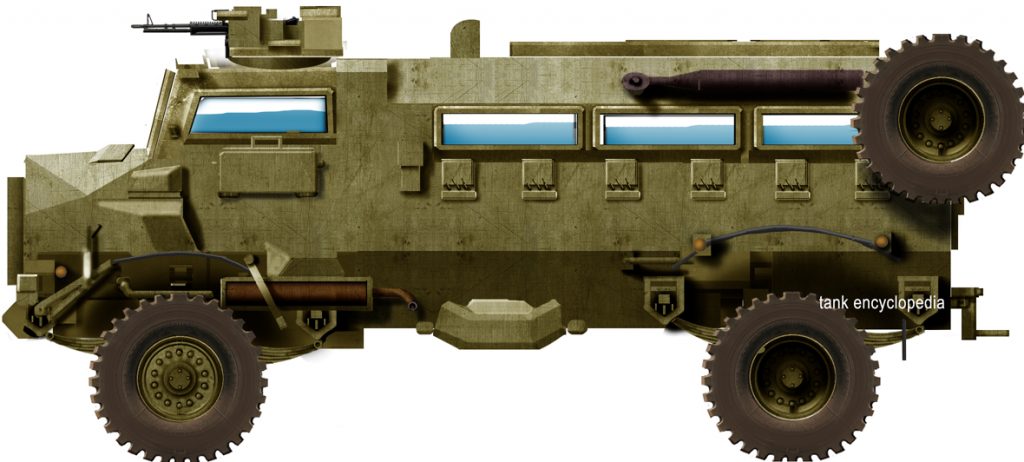
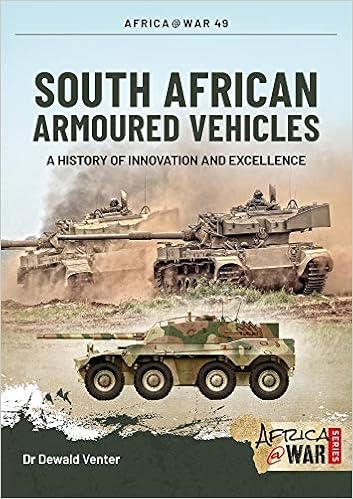
One reply on “Casspir”
Great article, I believe the variant armed with the 20mm Hispano used
by koevoet went under the designation “K-Car”, similar to the Rhodesian Allouette III’s that had 20mm cannons mounted on them which were designated K-Car.